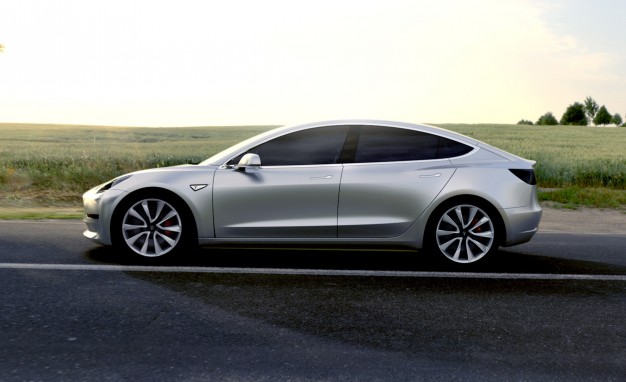This note was originally published as an op-ed last week in Fortune. Details around Tesla’s debt raise have been updated.
If only traditional auto and other tech companies were as bold as Tesla. It’s betting itself on the Model 3 moonshot, but de-risking the bet by taking out an insurance policy in the form of selling $1.8 billion in debt at 5.3% yield, greater than the targeted $1.5 billion raise at 5.25%.
It’s important to understand that Tesla does not need the $1.8 billion in debt to ramp Model 3 production. The company can fund the nearly $2 billion manufacturing investment out of its $3 billion cash balance. But Tesla is raising money because it’s critical it has an insurance policy if the Model 3 ramp hits any unexpected issues. Things are going well right now, and raising the money will be much easier than it would be in the future if Tesla faced unexpected issues. If Tesla doesn’t fund for the unexpected, CEO Elon Musk may lose the company.
To illustrate what’s at stake, let’s imagine that Tesla does not raise money today, and a year from now, something unforeseen comes up: a supplier goes under, a recall happens, or there is an earthquake, and the company needs an additional $1 billion to fix the problem. Investors will likely get spooked and pass on the offering at Tesla’s time of need. Then the dominos would begin to fall. Model 3 production would not scale, sales targets would be missed, and the company would likely run out of cash. Tesla’s assets would quickly get scooped up by Apple, Google, or any traditional automakers eager to get their hands on Tesla’s engineers and robotic manufacturing systems. Musk would likely be out, and the army of employees with a shared mission would be leaderless. This measurable risk of default is one of the reasons why Tesla’s bond raise is, by definition, a junk bond.

Debt makes sense and is cheaper. This is Tesla’s first debt deal, which begs the question: Why use debt? Most tech companies use equity, mainly because they don’t have the option to use debt, given their lack of hard assets that debt investors demand. Tesla is a tech company that makes a product through industrial assets that should be financed through debt; doing so optimizes its capital structure. The debt was priced at 5.3%, and is 2.5 times cheaper than equity. Separately, the rank-and-file Tesla employees we talk to believe shares of Tesla are undervalued, and that the company will be much bigger 10 years from now. You can call it a view of the future or blind optimism, but we call it a shared mission.
Coming back for more money. Tesla will need to raise more money in the future. It’s a tech company with industrial assets growing 50% to 100% per year. We expect the company to raise more money to build a new production facility in 2020, as well as Gigafactories 3,4, and 5. Tesla raises money in stages because it needs to grow capital and assets at a consistent, efficient pace. If Tesla grows its capital (cash) base faster than its asset base, it’s not cost efficient. On the other hand, If Tesla grows its asset base faster than its capital base, it risks running out of cash.
Tesla can fund debt service as long as investors believe in the story. Adding the $1.8 billion debt raise at 5.3% to our model, Tesla’s 2018 loss increases to $1.16 billion from $1.06 billion in our pre debt model. While the company doesn’t have the cash flow to service the debt, we expect investors to stand behind the story and service the debt until 2020, when we expect Tesla to start making money.
Don’t confuse the term “junk bond” with the quality of the company and magnitude of the opportunity in front of Tesla. If successful in ramping the Model 3, Tesla’s sales will rise from $7 billion in 2016 to $22 billion in 2018, at which point a middle-income family will be able to afford an electric (and eventually autonomous) vehicle. Revenue from Model 3 will fund Model Y (expected in 2019), Tesla Semi (our best guess is 2022), and, most importantly, the master plan of accelerating the world’s transition to renewable energy.
Disclaimer: We actively write about the themes in which we invest: artificial intelligence, robotics, virtual reality, and augmented reality. From time to time, we will write about companies that are in our portfolio. Content on this site including opinions on specific themes in technology, market estimates, and estimates and commentary regarding publicly traded or private companies is not intended for use in making investment decisions. We hold no obligation to update any of our projections. We express no warranties about any estimates or opinions we make.